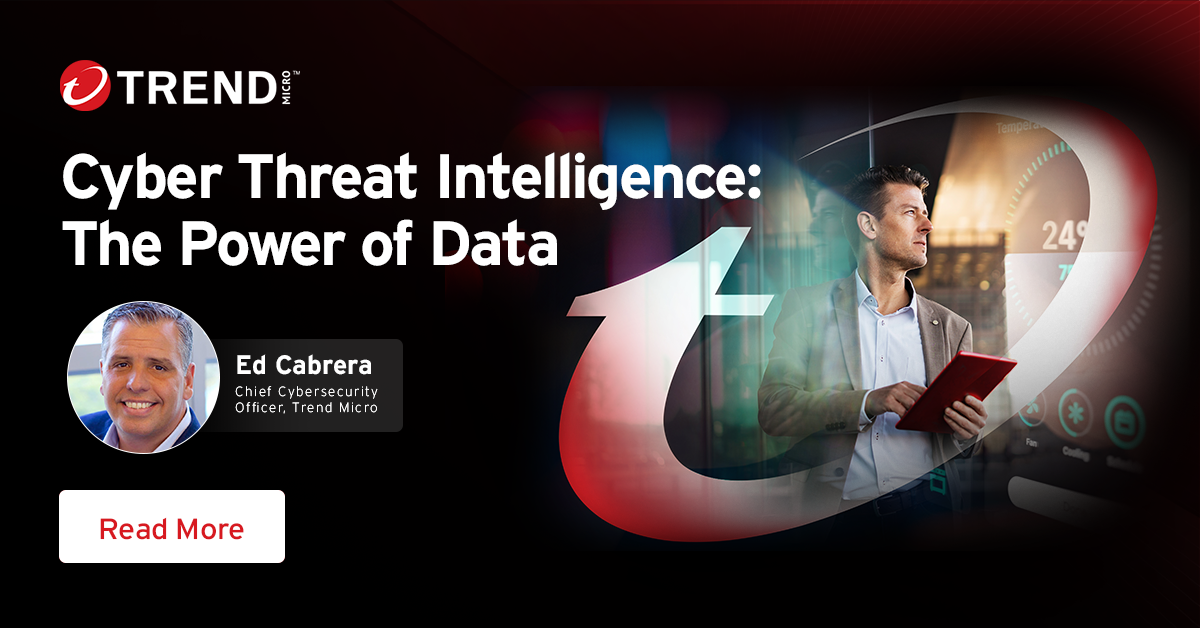Cyber Threat Intelligence: The Power of Data


In an increasingly connected and digital world, cyber threats have emerged as a significant challenge that can jeopardize your organization’s reputation, financial stability, and overall operational efficiency. In fact, according to a 2022 report by IBM, the average cost of a data breach is now $4.35 million. Given the growing prominence and impact of cyber threats, Chief Risk Officers (CRO) need to pay close attention to cyber threat intelligence and its role in enhancing your organization’s cybersecurity posture.
What is cyber threat intelligence?
Cyber threat intelligence is derived from cybersecurity experts who organize, analyze, and refine information gathered about attacks. The four types of intelligence are: strategic, tactical, operational, and technical threat.
Benefits of cyber threat intelligence
1. Comprehensive risk assessment
A vital responsibility of a CRO is to assess and manage the various risks facing an organization. According to a 2020 Ponemon Institute study, organizations that leverage threat intelligence are 2.5 times more likely to have an effective cybersecurity posture. Cyber threat intelligence provides invaluable insights into the specific cyber threats targeting your organization, industry, or customers. By incorporating threat intelligence into your risk assessment process, you can develop a more comprehensive understanding of your organization’s cyber risk landscape and make informed decisions about the allocation of resources and investment in security measures.
2. Proactive defense
Threat intelligence enables your organization to adopt a proactive approach to cybersecurity, allowing you to anticipate and mitigate potential threats before they result in a security incident. By staying informed about the latest tactics, techniques, and procedures (TTPs) employed by cyber adversaries, you can ensure your organization’s defenses are up-to-date and effective against emerging threats. A 2019 SANS Institute survey found that 72% of organizations experienced improved prevention and detection capabilities due to the use of CTI.
3. Prioritization of resources
With limited security budgets and resources, CROs must prioritize investments in areas with the most significant impact on reducing risk. Cyber threat intelligence helps you identify the most likely and high-impact threats to your organization, enabling you to allocate resources more effectively and make strategic decisions about your cybersecurity investments. According to the Ponemon Institute, organizations that used threat intelligence experienced a 50% reduction in the average data breach cost.
4. Improved incident response
In the event of a security breach, rapid and effective incident response is critical to minimize the impact on your organization. Threat intelligence can provide your incident response team with crucial information about the attacker’s TTPs, enabling them to respond more effectively to the threat and reduce the mean time to respond (MTTR). A 2020 study by the Enterprise Strategy Group found that 71% of organizations that used cyber threat intelligence experienced improved incident response.
5. Enhanced third-party risk management
Many organizations rely on third-party vendors for various services, which can introduce additional cyber risks. A 2021 study by the Ponemon Institute found that 59% of organizations experienced a data breach caused by a third party. Threat intelligence can help you assess the cyber risk posed by your supply chain vendors and partners, allowing you to make informed decisions about which third parties to work with and implement appropriate risk mitigation measures.
6. Regulatory compliance
As a CRO, ensuring compliance with relevant cybersecurity regulations and standards is a top priority. Cyber threat intelligence can help you identify potential gaps in your organization’s compliance posture, enabling you to address them proactively and avoid costly fines and penalties. In 2021, the average cost of non-compliance was $5.47 million, according to a Ponemon Institute study.
7. Competitive advantage
Maintaining a strong cybersecurity posture in a highly competitive business environment can be a crucial differentiator. A 2019 Information Systems Audit and Control Association (ISACA) study found that 69% of organizations experienced a competitive advantage from their cybersecurity investments. By leveraging CTI, you can ensure that your organization stays ahead of cyber threats and demonstrates its commitment to protecting customer data and maintaining trust, giving you a competitive edge in the marketplace.
8. Board-level communication
As a CRO, communicating the importance of cybersecurity investments to the board of directors is vital. A 2020 National Association of Corporate Directors (NACD) study found that 73% of board directors wanted more information on cyber risks and threat intelligence. Cyber threat intelligence can provide you with concrete data and actionable insights to help you articulate the risks facing your organization and the potential benefits of investing in cybersecurity measures.
9. Reduction in False Positives
By incorporating threat intelligence into your organization’s security operations, you can reduce the number of false positives generated by security tools, leading to more efficient and effective security operations. According to a 2018 study by the Ponemon Institute, organizations that used CTI experienced a 27% reduction in the number of false positives generated by their security tools.
10. Employee Training and Awareness
Cyber threat intelligence can also be crucial in developing targeted employee training and awareness programs, helping ensure your organization’s workforce is better equipped to recognize and respond to cyber threats. According to a 2021 report by the SANS Institute, 66% of organizations found that CTI played a significant role in enhancing their cybersecurity training and awareness initiatives.
Next steps
As a Chief Risk Officer, leveraging cyber threat intelligence can provide invaluable insights into the specific cyber threats facing your organization, enabling you to adopt a more proactive and effective approach to managing cyber risk. With the support of statistics and figures, it’s evident that incorporating threat intelligence into your risk management strategy can lead to improved cybersecurity posture, reduced costs, and enhanced competitive advantage. By understanding and prioritizing cyber threat intelligence, you can drive better decision-making and help protect your organization from the ever-evolving landscape of cyber threats.
Explore Trend Micro’s threat intelligence solutions and global threat research for more information.
Read More HERE



